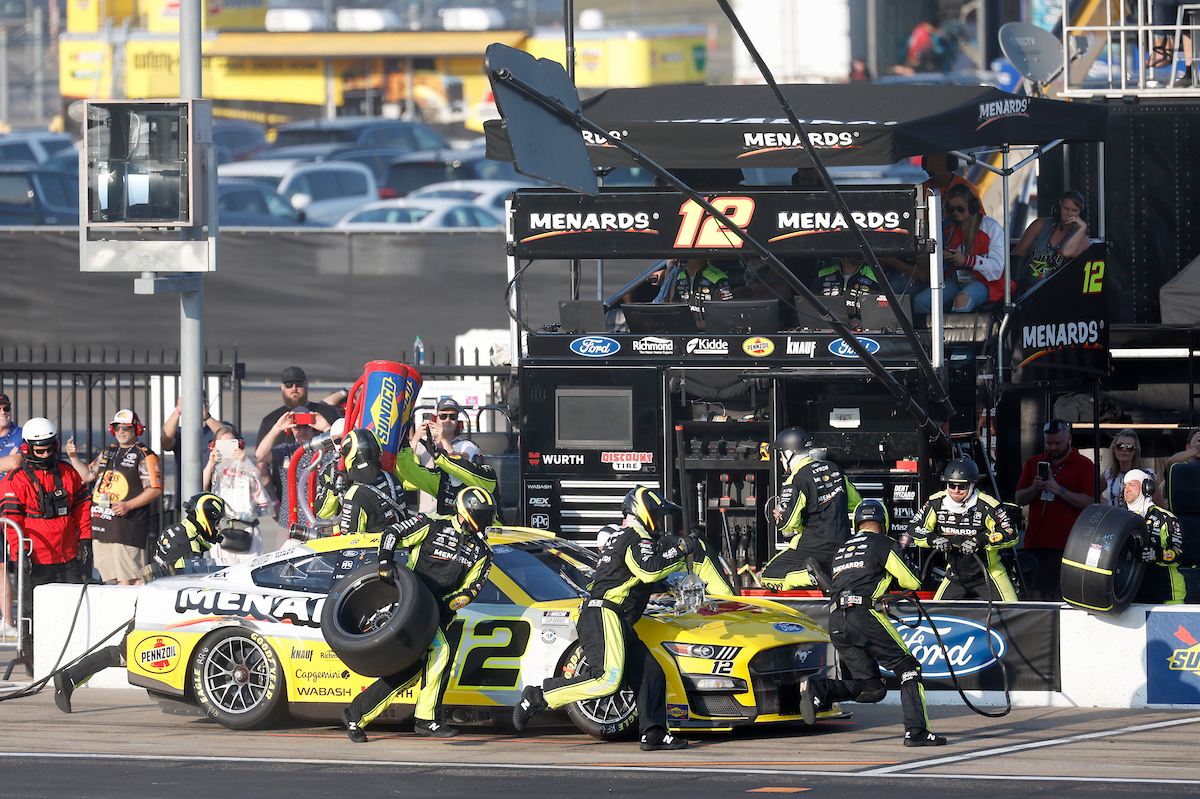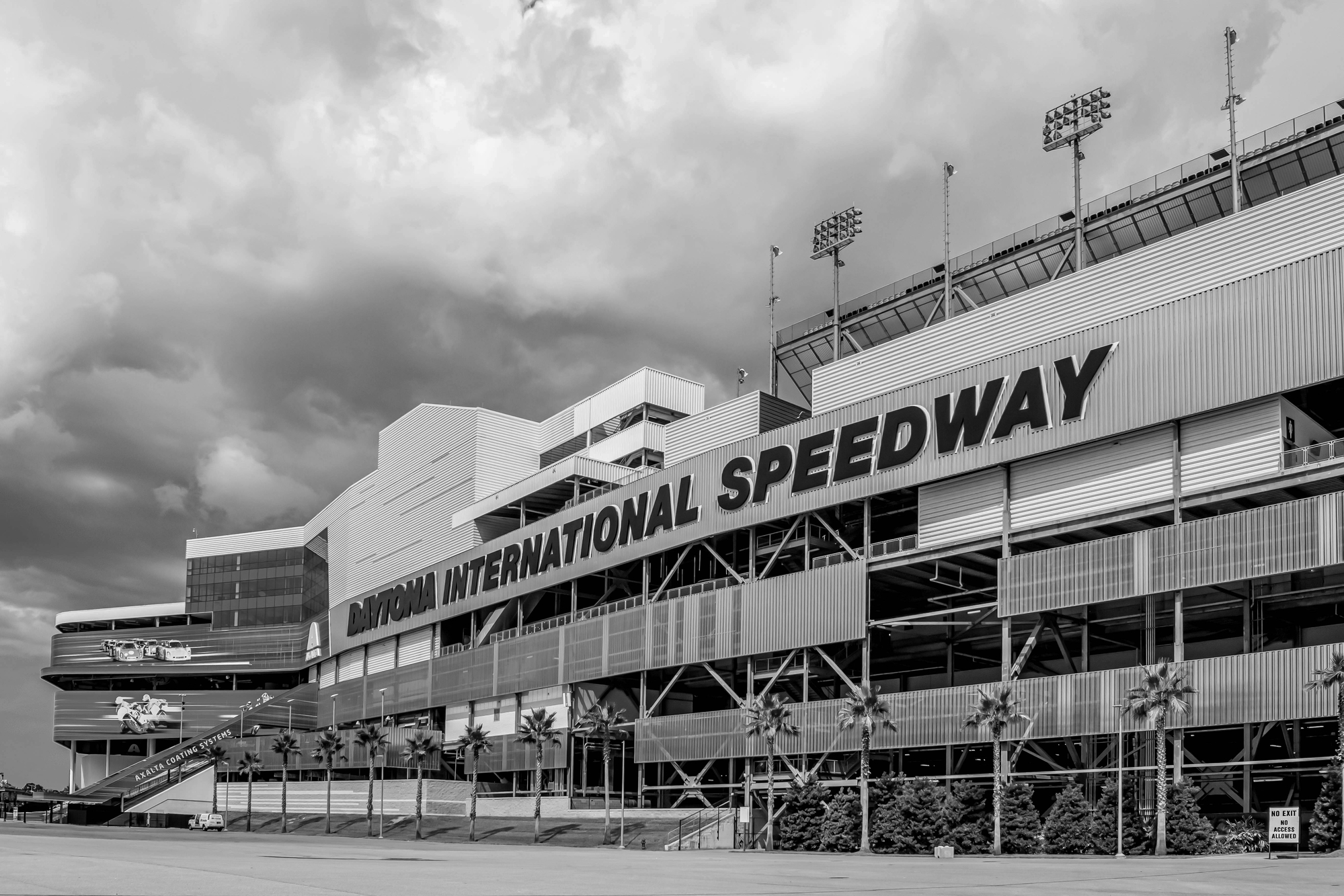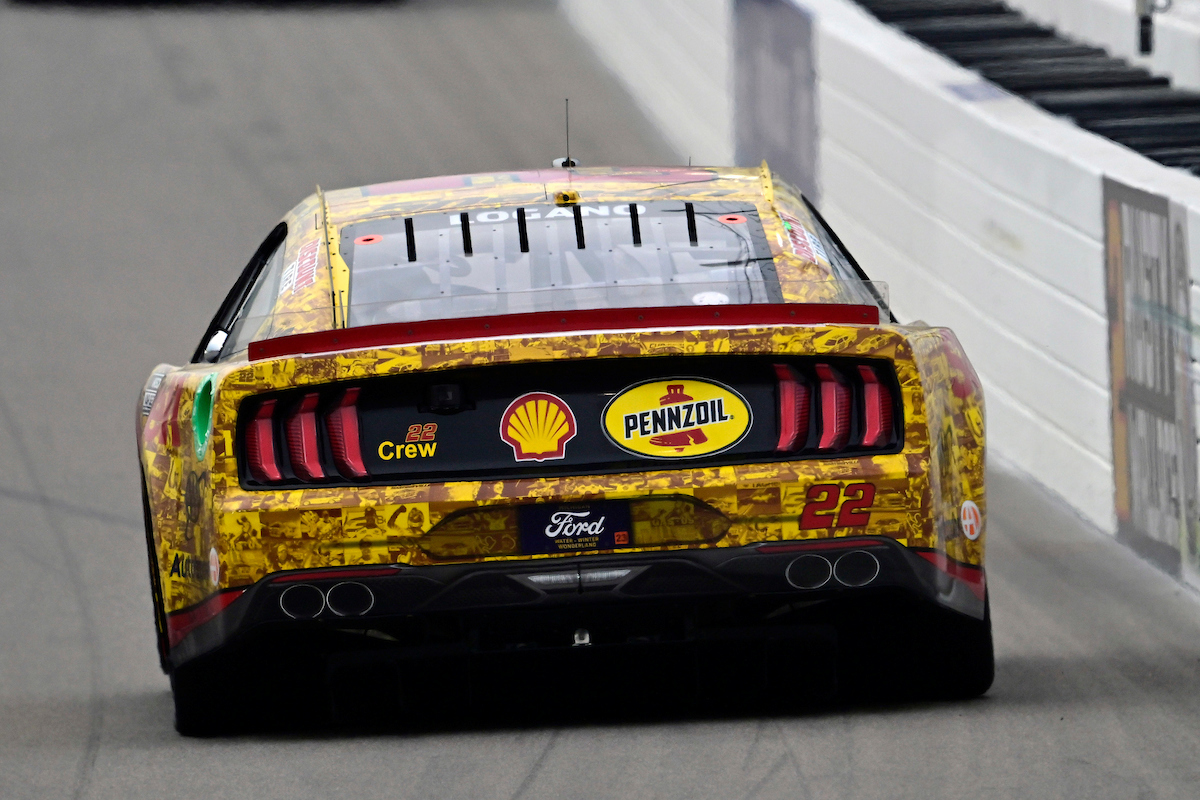Is There An Age Limit For NASCAR Drivers?
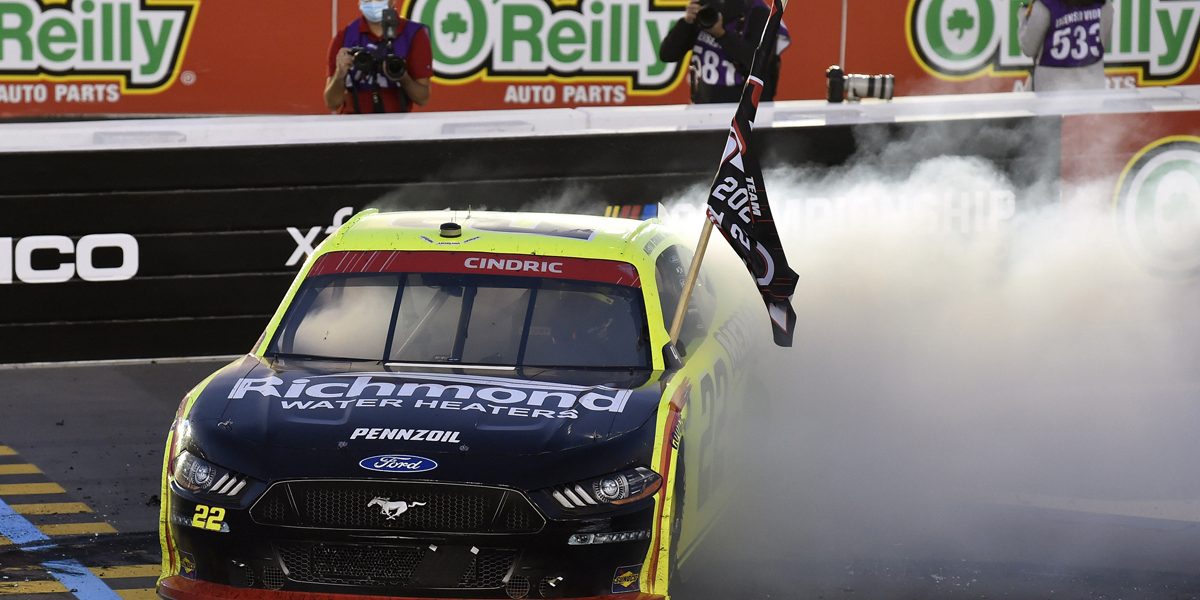
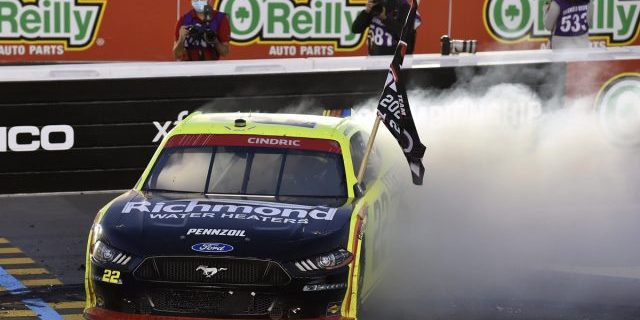
The age limit for NASCAR drivers has been a hot topic of discussion as the sport has evolved. Initially, some drivers began their careers in what is now known as the NASCAR Cup Series before they turned 18. However, there have been calls within the NASCAR community to reassess these age limits, taking into account factors such as safety, experience, and competitive fairness.
It’s generally recognized that NASCAR sets a minimum age requirement for drivers, and currently, drivers must be at least 18 years old to compete in the NASCAR Cup Series. This age requirement is in place to ensure that drivers have sufficient maturity and experience before competing at NASCAR’s highest level. Discussions around raising the age limit to enter the top series suggest that stakeholders are considering increasing it to further emphasize safety and preparedness. On the other end of the spectrum, there’s no formal maximum age limit, allowing veteran drivers to continue racing as long as they retain their competitive edge and can meet the necessary performance standards.
Key Takeaways
- The minimum age requirement for NASCAR Cup Series drivers is 18 years.
- There is no formal maximum age limit for NASCAR drivers.
- Discussions about adjusting the minimum age reflect ongoing considerations for safety and driver development.
Table of Contents
Evolution of NASCAR Age Policies
NASCAR’s age requirements have shifted over time to balance opportunity for young drivers with safety and experience factors.
Historical Context
NASCAR, traditionally known for its appeal to seasoned competitors, initially imposed no specific minimum age limit. This permitted mature drivers to dominate the sport. However, as motorsports advanced, concerns over safety and the need for adequate experience led to the setting of age boundaries. The minimum age for NASCAR licensing was once set at 18 years old without parental consent. This regulation intended to establish a baseline for driver maturity and experience before competing at the professional level.
Recent Adjustments
In recent years, further adjustments emerged, lowering the threshold age for aspiring racers. NASCAR now allows individuals as young as 15 to acquire a license with parental consent, and those at least 14 can obtain a Learner’s Permit. These changes aimed to introduce young talent into the sport at an earlier stage while maintaining a safe racing environment. Occasionally, the subject of increasing minimum requirements surfaces among veterans and officials, contemplating an age change from 18 to 20 for Cup series racers, indicating a continuous evolution of the age policies.
Regulatory Perspective and Current Debates
Regulations in NASCAR dictate the age at which drivers can compete, and recent times have seen active discussions around these age requirements, reflecting a mix of safety concerns and developmental considerations in the sport.
Current Discussions
Debates concerning the minimum age for NASCAR drivers are ongoing. Presently, drivers are allowed to compete in the NASCAR Cup Series and Xfinity Series at the age of 18. The Truck Series permits participation from those aged 16 but limits them to tracks no longer than 1.25 miles. The ARCA Menards and Whelen Modified series have set their minimum age requirement at 15 years old. Some industry veterans suggest that increasing the minimum age for the NASCAR Cup Series to 20 could be beneficial, indicating a perspective that experience and maturity are significant factors in racing at the highest levels.
Industry Experts’ Views:
- Brad Keselowski: Advocate for raising minimum age to 20 in NASCAR Cup Series.
- Steve Phelps (NASCAR President): Confirmed that NASCAR is reviewing driver age requirements.
Industry Concerns
Safety is a primary concern within NASCAR, sparking debates about the adequacy of current age limits. Some argue that a higher age minimum could contribute to safer racing conditions, as older drivers might have more experience and better decision-making skills under high-pressure situations. Furthermore, NASCAR continually evaluates its driver requirements to ensure that safety procedures are aligned with the growth and development of drivers, particularly those entering the sports’ top echelons at a young age. This balance between allowing young talent to flourish and maintaining a safe racing environment remains a central theme in discussions.
Factors in Consideration:
- Driver Experience: Concerns regarding whether younger drivers possess sufficient experience for top-tier series.
- Safety Procedures: Ongoing evaluations to align safety standards with driver development.
Impact on Drivers and Development
The age at which a NASCAR driver starts their career can have significant implications on their development and the broader industry concerns.
Driver Development
Driver development programs in NASCAR are structured to support young talent with the goal of preparing them for high-level competition. The transition from regional series, where drivers as young as 15 can participate, to the national stage is designed with progression in mind. In series like ARCA Menards and Whelen Modified, a lower minimum age allows drivers to gain experience before stepping up to national series. Progressing to the Truck Series, drivers can compete from the age of 16, albeit with restrictions on track length, to adapt to the demands of larger vehicles and higher speeds. The step to top-tier series like the Cup or Xfinity requires drivers to be at least 18, aligning with considerations of preparedness and safety.
Implications of Early Entry
Starting at a young age in professional motorsport can influence a driver’s career trajectory and marketability. The introduction of drivers as young as 12 in the Pro Late Model Tour by the CARS Tour exemplifies a shift towards earlier development. This modification recognizes the value of competitive experience from a young age in a driver’s development. However, it raises questions within the industry regarding the balance between youthful opportunity and the need for mature judgment at high speeds. The decision to lower entry ages reflects efforts to foster driving talent earlier but requires careful consideration of safety standards and the pressures young drivers may face in such a competitive environment.
Financial Influences on Age Limits
The financial landscape within NASCAR has indirect yet significant effects on age restrictions for drivers. Financial incentives play a crucial role in setting these limits. Teams and sponsors often search for youthful talent, providing them with the resources needed for a successful career. This search is driven by potential return on investment; young drivers can offer sponsors long-term visibility and a fresh audience appeal.
Younger competitors, potentially with a significant social media following, might attract sponsors more readily. This is due in part to their ability to connect with a younger demographic, fostering brand loyalty from an early age. Consequently, sponsors may advocate for lower minimum age requirements to capitalize on this market.
Conversely, the cost of running a NASCAR team is high. This means teams often require drivers who can secure substantial sponsorship to cover expenses. Experienced drivers might sometimes prime the interest of high-profile sponsors, but their careers tend to be shorter, raising the question of how age minimums impact the financial longevity of teams.
Additionally, NASCAR teams consider the revenue potential of developing talent. By mentoring drivers from a younger age, teams stand to benefit from long-term financial gains if a driver becomes successful. This factor can influence teams to support younger age limits, hoping to establish a driver before competition increases for their signature.
Conclusions and Future Outlook
The age limitations for NASCAR participation have been established as a measure to balance opportunity and safety in the sport. Drivers as young as 15 can obtain a NASCAR license with parental consent. Once drivers reach 18, they are eligible to apply for a license independently. Additionally, NASCAR offers Learner’s Permits for individuals starting at 14 years old.
Discussions within NASCAR circles suggest potential shifts in these requirements. Figures such as Brad Keselowski advocate for raising the minimum age of Cup drivers from 18 to 20. As a sport in continuous revision of its regulations, NASCAR reviews its age criteria for participation to reflect its commitment to both the development of young talent and maintaining high competition standards.
In the perspective of continuous evolvement, it is reasonable to anticipate future adjustments to age requirements which will align with the goals of the sport and its stakeholders. Ongoing reviews by NASCAR’s governing bodies ensure that regulations, including the minimum age limit, appropriately balance driver development and safety protocols.
Forthcoming seasons will likely shed more light on how NASCAR’s demographic and regulatory landscape might alter. As the industry advances, so does its approach to nurturing drivers, which could result in modifications to current age limits.
In short, NASCAR’s policies pertaining to driver age limits echo the sport’s dedication to accommodating emerging drivers while prioritizing safety. Changes are made as needed in response to ongoing reviews and discussions, highlighting the adaptability of NASCAR’s regulations to evolving standards and expectations.






